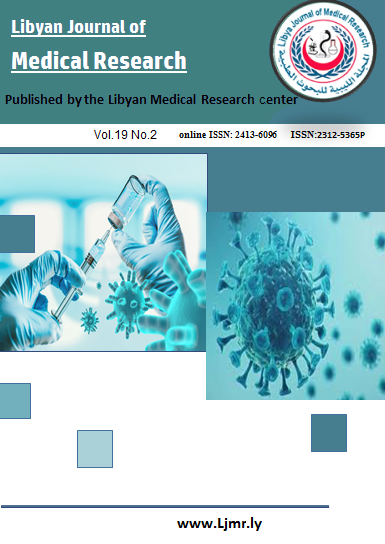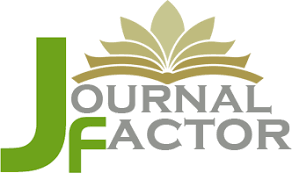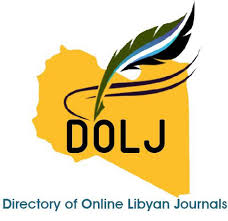In vitro effects of Air Jamu Pak Tani, an herbal product, on aminopyrine hepatic phase I n-demethylase activity in spontaneous hypertensive rats: the mechanism involved
DOI:
https://doi.org/10.54361/LJMR.19.2.23Keywords:
Drug metabolism, Hepatocytes, Aminopyrine, Herbal product, Cytochrome 450Abstract
Objective: Pharmacokinetic interactions of co-administered herbal isolates with pharmaceuticals and the mechanisms of interactions remain to be elucidated. Herein, we evaluated the in vitro effects of Air Jamu Pak Tani (AJPT), a mixture of plant isolates, on phase I aminopyrine metabolism and the molecular mechanism involved in spontaneous hypertensive rat (SHR) livers. Material and Methods: Hepatocytes were isolated by the collagenase perfusion technique. Aminopyrine n-demethylase activity was determined using the colorimetric method of Nash. Results: Compared to control AJPT dose independently increased significantly the aminopyrine n-demethylase activity by 29.6% (P<0.05). Molecular mechanism elucidation, using protein stimulants (or inhibitors), showed that the effect of AJPT was significantly abrogated by the pre-incubation of hepatocytes with 3-isobutyl-methylxanthine and okadaic acid. Trifluoperazine and genistein did not change the effect of AJPT, while no significant observation was verified in the presence of guanylyl-5’-imidodiphosphate and furafylline. In conclusion, administration of AJPT induced dephosphorylation of cytochrome P450 in young male SHR hepatocytes. The effect of AJPT was mediated through different molecular mechanisms, most probably, including inhibition of tyrosine kinases, calmodulin, and cAMP/PKA pathways, and also due to activation of protein phosphatases. Therefore, caution should be considered when AJPT is used with n-demethylase substrate ‘drugs’ as it may reduce their bioavailability.
Downloads
References
1. Hodgson E, Goldstein JA. Metabolism of toxicants: Phase I reactions and pharmacogenetics. In Hodgson E. and Smart RC. (eds.). Introduction to biochemical toxicology. New York: Wiley Interscience. 2001; 67-96.
2. Briggs DR. The regulation of herbal medicines in Australia. Toxicology. 2002; 181-182:565-70.
3. Zhou S, Gao Y, Jiang W, Huang M, Xu A, Paxton JW. Interactions of herbs with cytochrome P450. Drug Metab. Rev. 2003; 35:35-98.
4. Purwantiningsih, Hussin AH, Chan KL. Effect of standardized Eurycoma longifolia extract on rosiglitazone metabolism in the old normal male rat hepatocytes: a mechanism study. International Journal of
Pharmaceutical Sciences and Research. 2015; 6(5) 2163-69.
5. Anwar R, Hussin AH, Ismail S, Mansor SM. In vitro effect of mitragynine on activity of drug metabolizing enzymes, n-demethylase and glutathione s-transferase in streptozotocin-induced diabetic rats. Pharmacoloyonline. 2012; 1:68-75.
6. Chin JH, Hussin AH. Effect of the Orthosiphon stamineus, Benth on aminopyrine metabolism in rat hepatocytes. Malaysian Journal of Pharmaceutical Sciences. 2007; 5(1):25-32.
7. Han CJ, Hussin AH, Ismail S. Effect of methanol leaf extract of Orthosiphon stamineus Benth. on hepatic drug metabolizing enzymes in Sprague Dawley (SD) rats. Journal of Bioscience. 2008; 19(1):21-31.
8. Mahfoudh M, Ismail N, Ismail S, Hussin AH. In vitro ex vivo assessment of Morinda citrifolia on drug metabolizing enzymes in spontaneously hypertensive rats. Pharmaceutical Biology. 2009; 47(12):1108–16.
9. Taher YA, Hussin AH. In vivo effects of Faizol Ubat Batuk, a herbal product on aminopyrine metabolism in rat hepatocytes. Libyan J. Med. 2011; 6:1-5.
10. Purwantiningsih, Hussin AH, Chan KL. Sex-related alterations of aminopyrine metabolism by standardized extract of Eurycoma longifolia (TAF-273). Acta Alimentaria. 2012; 41(3):316–26.
11. Merrick BA, Davies MH, Cook DE, Holcslaw TL, Schnell RC. Alterations in hepatic microsomal drug metabolism and cytochrome P-450 proteins in spontaneously hypertensive rats. Pharmacology. 1985; 30:129-35.
12. Nash T. The colorimetric estimation of formaldehyde by means of the Hantzsch reaction. Biochem. J. 1953; 55:416-21.
13. Canivenc-Lavier MC, Vernevaut MF, Totis M, Siess MH, Magdalou J, Suschetet M. Comparative effects of flavonoids and model inducers on drug-metabolizing enzymes in rat liver. Toxicology. 1996; 114:19-27.
14. Zhou S, Chan E, Pan SQ, Huang M, Lee EJ. Pharmacokinetic interactions of drugs with St John's wort. J. Psychopharmacol. 2004; 18:262-76.
15. Gibson GG, Skett P. Introduction to drug metabolism. 3th ed. Cheltenham: Nelson Thornes Publishers. 2001.
16. Timbrell J. Principles of biochemical toxicology. London: Taylor and Francis Ltd. 2001.
17. Pavithra BH, Prakash N, Jayakumar K. Modification of pharmacokinetics of norfloxacin following oral administration of curcumin in rabbits. J. Vet. Sci. 2009; 10:293-97.
18. Salman SA, Amrah S, Wahab MS, Ismail Z, Ismail R, Yuen KH, Gan SH. odification of propranolol's bioavailability by Eurycoma longifolia water-based extract. J. Clin. Pharm. Ther. 2010; 35:691-96.
19. Oesch-Bartlomowicz B, Oesch F. Phosphorylation of cytochromes P450: first discovery of a posttranslational modification of a drug-metabolizing enzyme. Biochem. Biophys. Res. Commun. 2005; 338:446-49.
20. Dombradi V. Structure and function of protein phosphatases. Eur. J. Biochem. 2002; 269:1049.
21. Huai Q, Wang H, Zhang W, Colman RW, Robinson H, Ke H. Crystal structure of phosphodiesterase 9 shows orientation variation of inhibitor 3-isobutyl-1-methylxanthine binding. Proc. Natl. Acad. Sci. USA. 2004; 101:9624-29.
22. Hube F, Lee YM, Rohrig K, Hauner H. The phosphodiesterase inhibitor IBMX suppresses TNF-alpha expression in human adipocyte precursor cells: a possible explanation for its adipogenic effect. Horm. Metab. Res. 1999; 31:359-62.
23. Grief F, Soroff HS, Albers KM, Taichman LB. The effect of trifluoperazine, a calmodulin antagonist, on the growth of normal and malignant epidermal keratinocytes in culture. Eur. J. Cancer Clin. Oncol. 1989; 25:19-26.
24. Bialojan C, Takai A. Inhibitory effect of a marine-sponge toxin, okadaic acid, on protein phosphatases. Specificity and kinetics. Biochem. J. 1988; 256:283-90.
25. Akiyama T, Ishida J, Nakagawa S, Ogawara H, Watanabe S, Itoh N, Shibuya M, Fukami Y. Genistein, a specific inhibitor of tyrosine-specific protein kinases. J. Biol. Chem. 1987; 262:5592-95.
26. Sesardic D, Boobis AR, Murray BP, Murray S, Segura J, de la Torre R, Davies DS. Furafylline is a potent and selective inhibitor of cytochrome P450IA2 in man. Br. J. Clin. Pharmacol. 1990; 29:651-63.
Downloads
Published
Issue
Section
License
Copyright (c) 2025 Yousef A. Taher, Awatef M. Samud, Abas Hj Hussin (Author)

This work is licensed under a Creative Commons Attribution-NonCommercial-NoDerivatives 4.0 International License.
Open Access Policy
Libyan journal of medical Research (LJMR).is an open journal, therefore there are no fees required for downloading any publication from the journal website by authors, readers, and institution.
The journal applies the license of CC BY (a Creative Commons Attribution 4.0 International license). This license allows authors to keep ownership f the copyright of their papers. But this license permits any user to download , print out, extract, reuse, archive, and distribute the article, so long as appropriate credit is given to the authors and the source of the work.
The license ensures that the article will be available as widely as possible and that the article can be included in any scientific archive.
Editorial Policy
The publication of an article in a peer reviewed journal is an essential model for Libyan journal of medical Research (LJMR). It is necessary to agree upon standards of expected ethical behavior for all parties involved in the act of publishing: the author, the journal editorial, the peer reviewer and the publisher.
Any manuscript or substantial parts of it, submitted to the journal must not be under consideration by any other journal. In general, the manuscript should not have already been published in any journal or other citable form, although it may have been deposited on a preprint server. Authors are required to ensure that no material submitted as part of a manuscript infringes existing copyrights, or the rights of a third party.
Authorship Policy
The manuscript authorship should be limited to those who have made a significant contribution and intellectual input to the research submitted to the journal, including design, performance, interpretation of the reported study, and writing the manuscript. All those who have made significant contributions should be listed as co-authors.
Others who have participated in certain substantive aspects of the manuscript but without intellectual input should only be recognized in the acknowledgements section of the manuscript. Also, one of the authors should be selected as the corresponding author to communicate with the journal and approve the final version of the manuscript for publication in the LJMR.
Peer-review Policy
- All the manuscripts submitted to LJMR will be subjected to the double-blinded peer-review process;
- The manuscript will be reviewed by two suitable experts in the respective subject area.
- Reports of all the reviewers will be considered while deciding on acceptance/revision or rejection of a manuscript.
- Editor-In-Chief will make the final decision, based on the reviewer’s comments.
- Editor-In-Chief can ask one or more advisory board members for their suggestions upon a manuscript, before making the final decision.
- Associate editor and review editors provide administrative support to maintain the integrity of the peer-review process.
- In case, authors challenge the editor’s negative decision with suitable arguments, the manuscript can be sent to one more reviewer and the final decision will be made based upon his recommendations.














